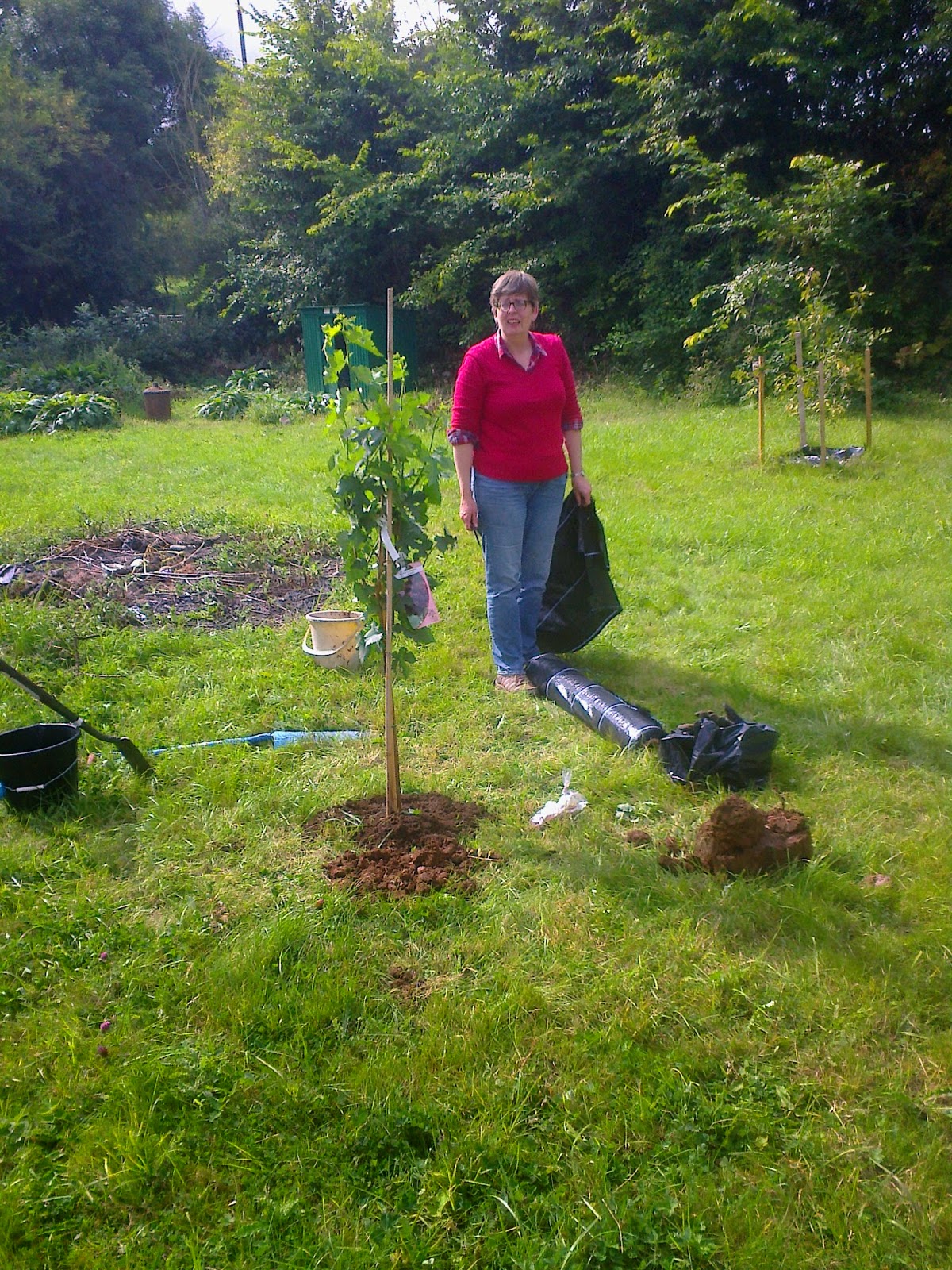We're building an Ugly Drum Smoker/Barbecue (UDS) on the orchard site from an used 50 gallon steel drum. We'll use this to cook pork and beef "low and slow over charcoal" in the American style for guests at the orchard. If you've not tasted this type of food before let me assure you it is delicious and the meat is tender and soft.
The UDS will be used elsewhere in support of charity fund raising events and also for our family events. Cooking times of 5 - 10 hours are not unusual, but it is well worth the wait. It is possible to buy these smokers ready made, but they tend to be very expensive except for the small ones.
The drum was delivered a couple of days ago. It had been previously used to transport sour cherry juice. It was in good condition, washed clean and no rust. However the first step of the process in building a smoker/barbecue is to strip the original paint from the drum and replace it with heat resisting paint. The original paint would not withstand the barbecue heat and would taint the food being cooked in the unit. The most easy way to achieve this is to light a hot fire in the drum and burn off the paint.
In the picture above you can see the drum was originally painted green on the outside and a clear protective lacquer inside the drum. We piled in some cardboard, scrap timber and applied a lighted match to set the fire in motion. We then left the site for a few hours to allow time for the fire to burn out. On our return most of the paint had burned off the surface of the drum, but we took also a paraffin flame gun to burn off any remaining paint.
Once the steel drum had cooled down we set to work with Aluminium Oxide sandpaper. It took an hour's hard manual work to clean off the paint residue on the outside of the drum. We hand sanded right down to the shiny bare steel. When the surface had been prepared we sprayed three coats of black heat resisting stove paint over the outside of the drum. The inside needs no further preparation or cleaning at this stage of the construction.
Reading the instructions on the spray can revealed we had to heat the paint to cure it to the final finish. This required we heat the drum to an operational temperature and maintain it for at least an hour. We fixed this by placing a bag of quick lighting charcoal on the ground, lighting it and leaving it until the charcoal was burning well. We tipped the drum over the fire (mouth down) so the heat from the charcoal would heat the drum to an operational temperature. and thus cure the paint. A couple of supporting bricks helped ensure an air gap to feed the fire.
Once we'd made sure the fire was going well and the drum achieving a working temperature, we left and will visit the site tomorrow morning. The quality of paint finish on the drum was very good.









